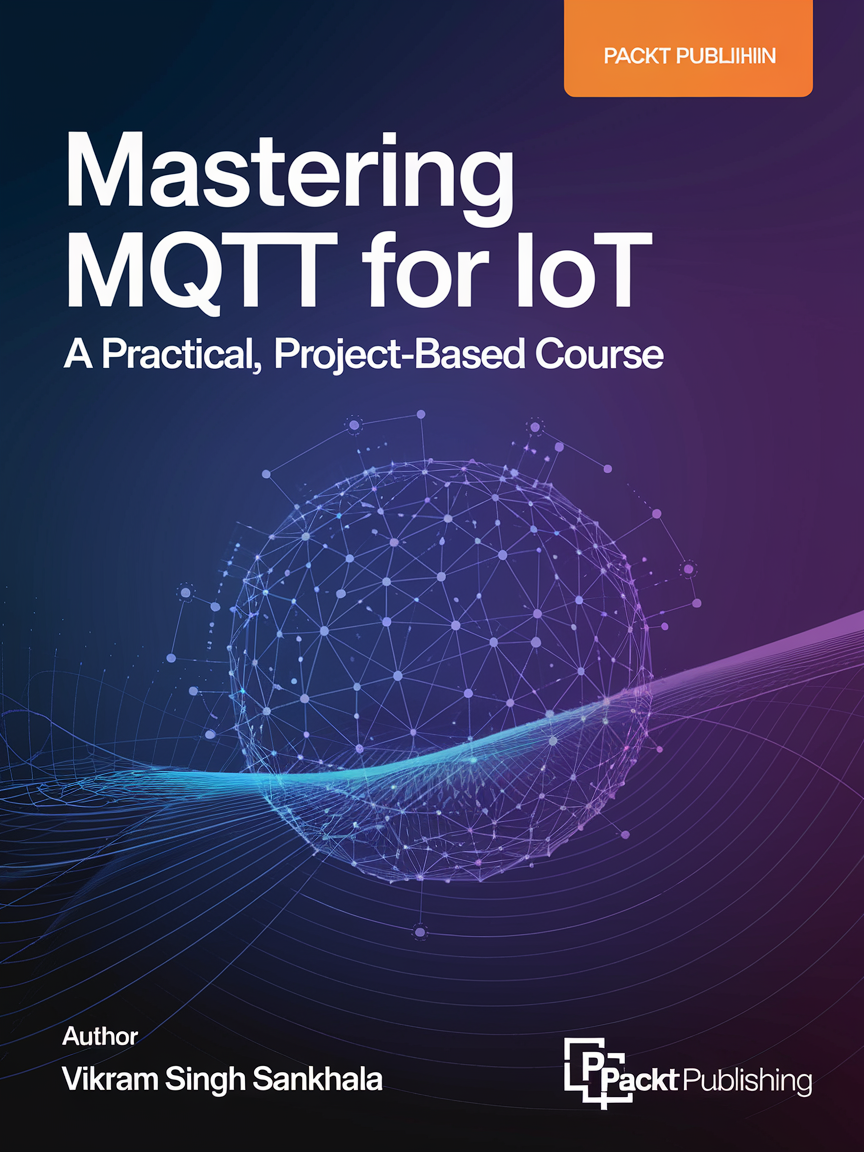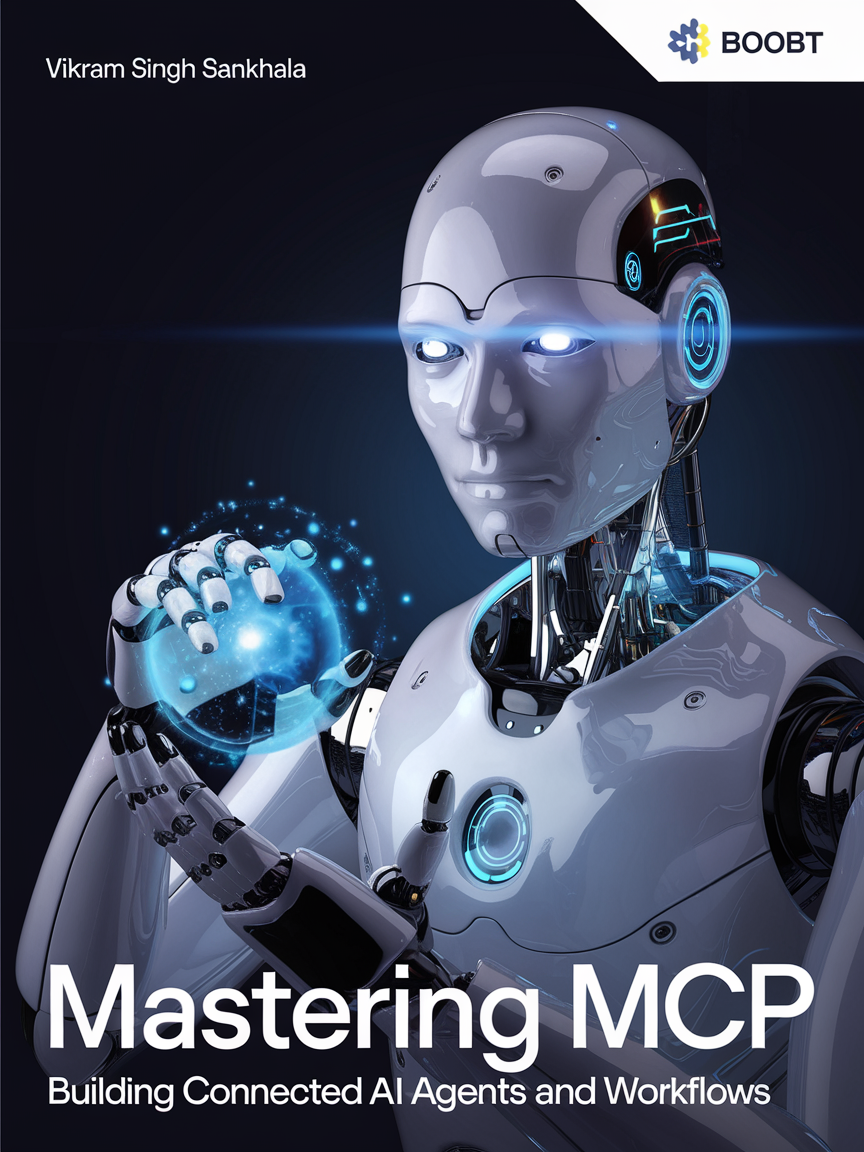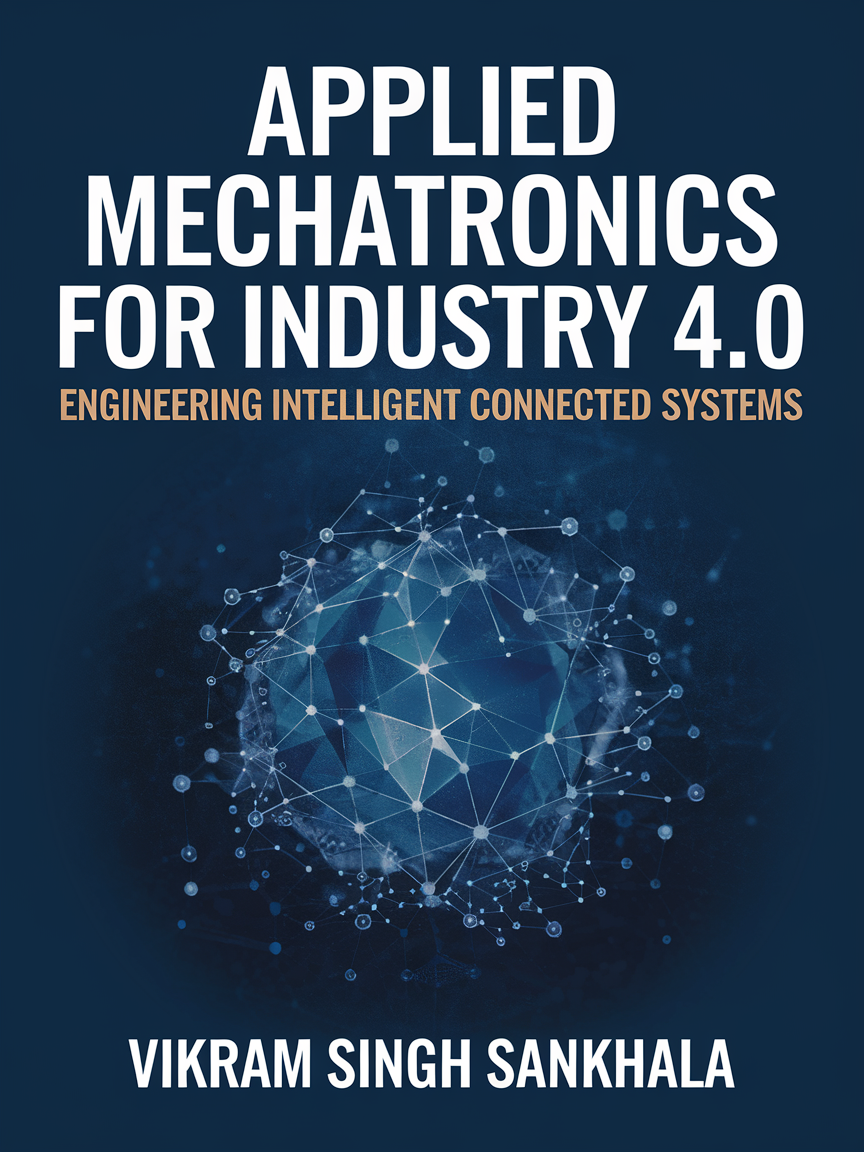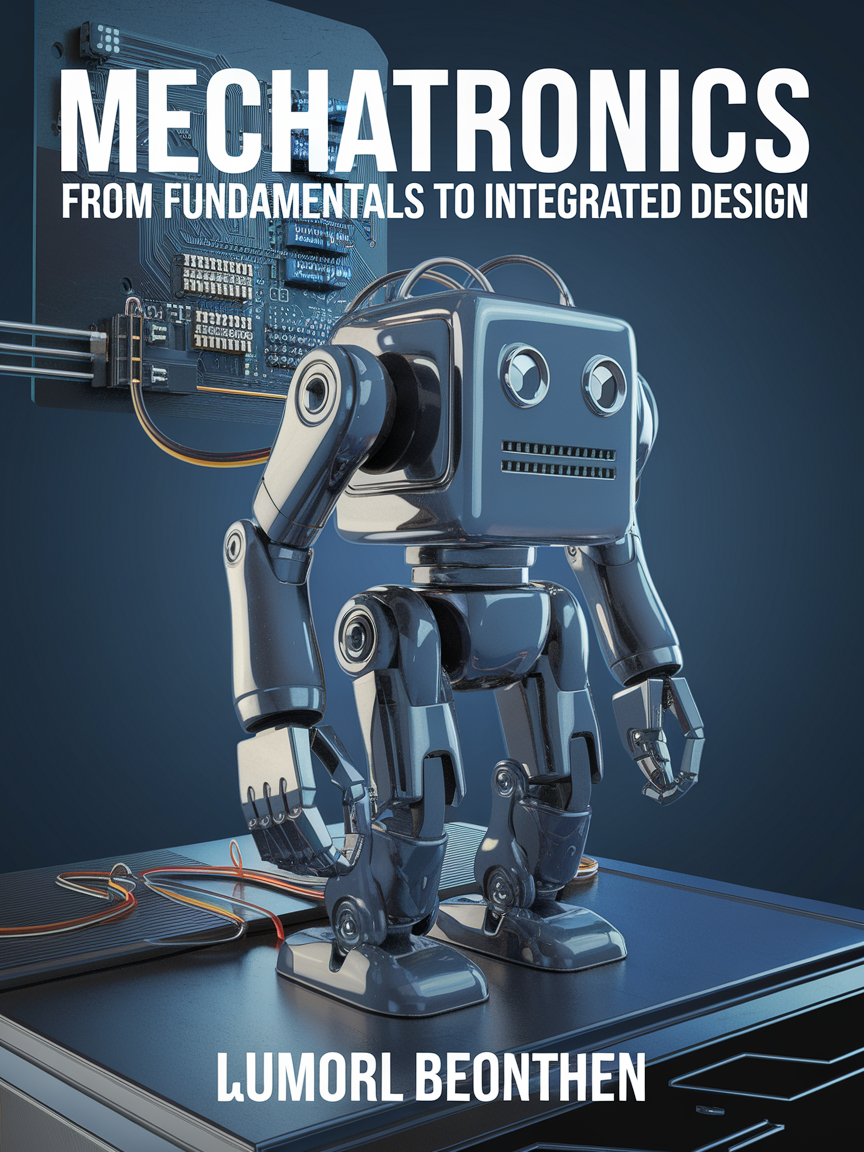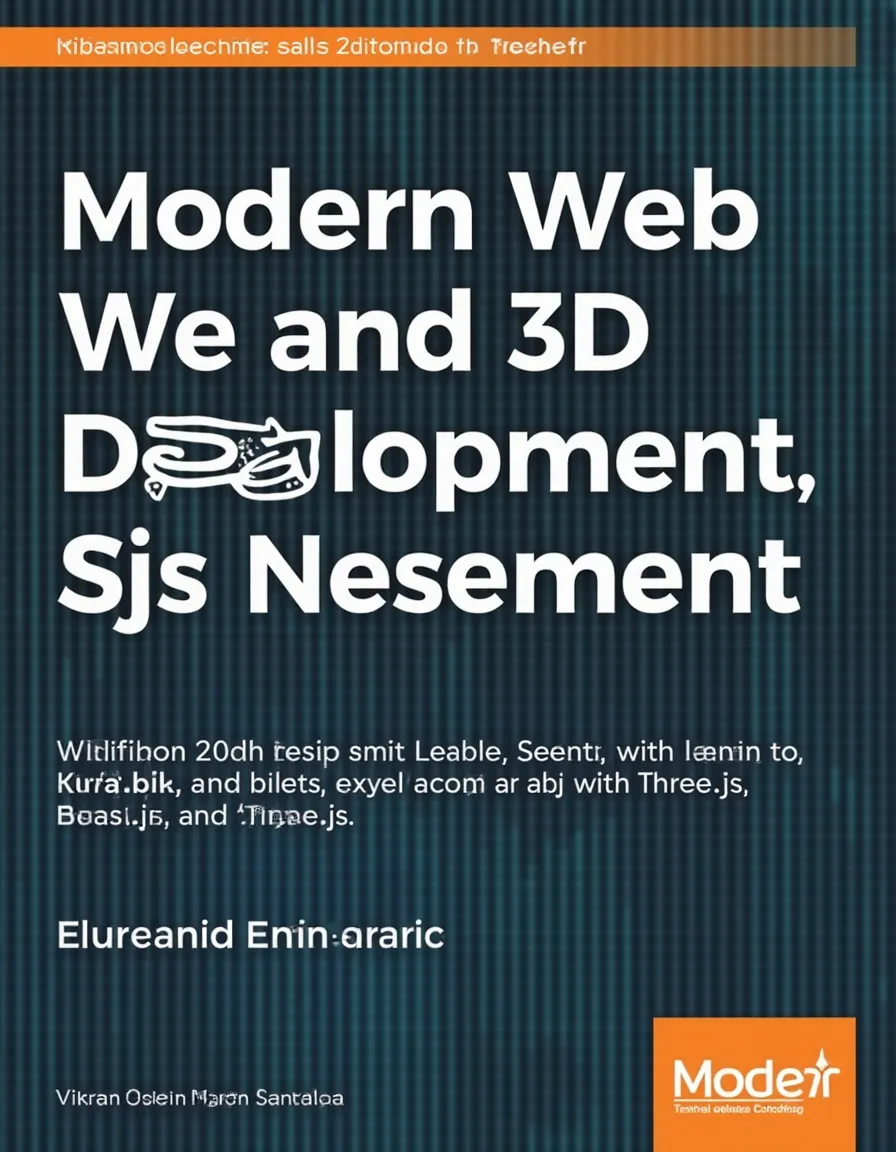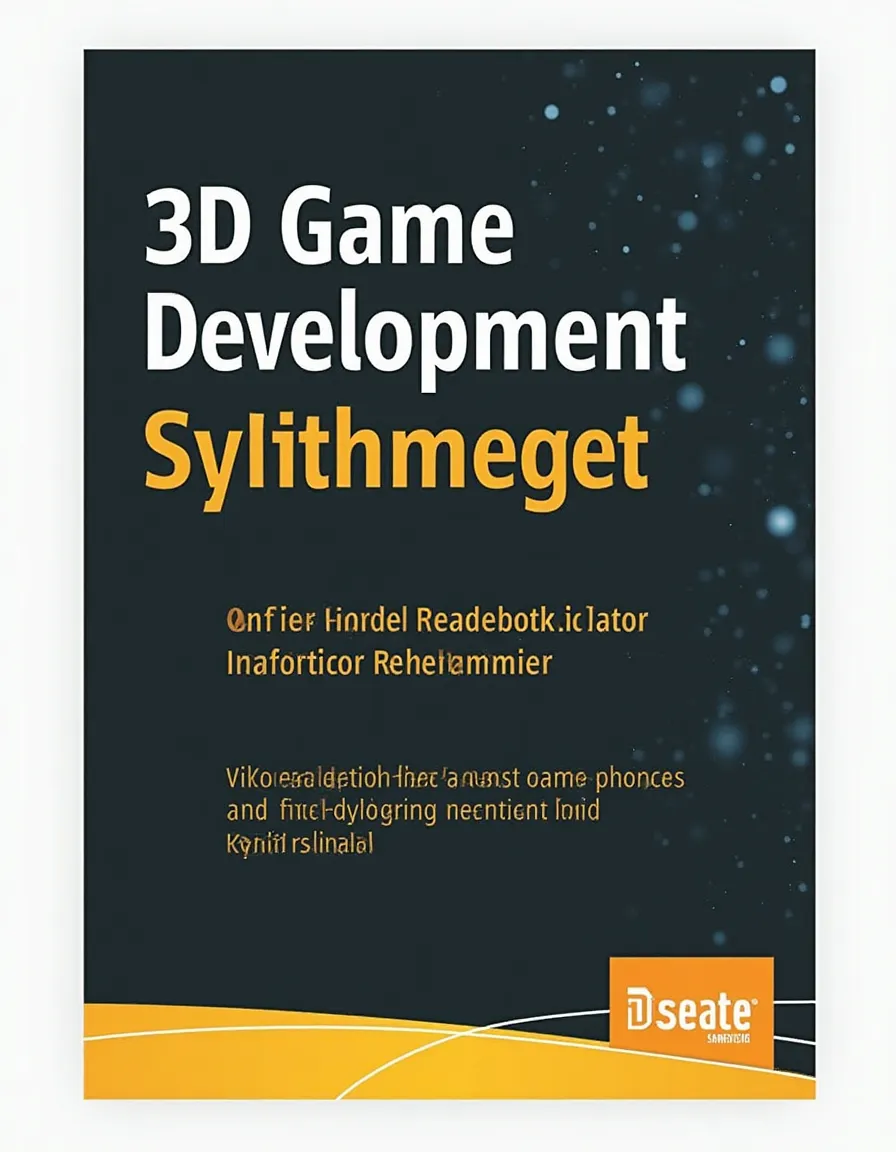This book offers a truly comprehensive look at modern telecom networks, which is impressive given the topic's complexity.
I found the breakdown of components, protocols, and devices from 4G through to 6G to be quite informative, although some sections felt a bit dense.
The author does a good job of explaining how different elements like the RAN and Core Network interact, making it easier to grasp the system as a whole.
It was particularly helpful to see the evolution and the focus on protocols like GTP and Diameter, as that's often where things get confusing.
I definitely learned a lot about things like network slicing and the emerging concepts for 6G, which felt quite forward-looking.
The emphasis on the interplay between devices and protocols provides a valuable perspective for understanding everyday services.
However, at times, the sheer amount of technical detail could feel a little overwhelming for someone who enjoys reading for fun.
While the material is solid, the presentation could have been a bit more engaging to truly pull the reader in.
It serves its purpose as a technical guide, but might be better suited for those actively working in the field rather than casual readers.
Overall, it’s a valuable resource for understanding the intricate workings of cellular systems, even if it requires focused attention.
I would recommend it to system integrators and innovators seeking a detailed roadmap of current and future telecom technologies.
It certainly helped clarify the "how" behind the telecommunication services we all rely on daily.
This book offers a thorough exploration of modern telecommunication networks, providing a valuable resource for system integrators.
The detailed breakdown of components, from RAN to core, and the inclusion of protocols like GTP and Diameter are particularly strong.
Sankhala's attempt to clarify the complexity of telecom is largely successful, though the sheer volume of information can feel dense at times.
The progression from 4G to the conceptual underpinnings of 6G is well-structured, offering a forward-looking perspective.
I appreciated the emphasis on the interplay between devices, protocols, and services, giving a holistic view of the ecosystem.
The sections on Open RAN, MEC, and network slicing are relevant and insightful for understanding current innovations.
However, at times, the technical explanations could benefit from more illustrative examples to aid comprehension for those less deeply entrenched in the field.
While comprehensive, the book sometimes reads more like a technical manual than an engaging narrative, which might limit its appeal to a broader audience.
The inclusion of future concepts for 6G is a commendable effort to keep the reader informed about emerging trends.
Overall, it's a solid, informative text for professionals seeking a deep dive into the subject matter.
It serves its purpose as a reference guide effectively, though it might not be the most accessible read for newcomers.
For those in the industry, this book is a worthwhile investment for its detailed and current information.
Vikram Singh Sankhala's "State-of-the-Art Telecommunication Networks" is an exceptionally thorough and illuminating deep dive into the complexities of modern cellular systems.
The book expertly navigates the evolution from 4G to 5G and even peeks into the conceptual framework of 6G, providing a clear roadmap for understanding.
Sankhala's approach of breaking down components, protocols, and devices is incredibly effective in demystifying the intricate ecosystem.
The detailed explanations of protocols like GTP and Diameter, and their role in services from basic voice to private 5G, are particularly impressive.
I appreciated how the book emphasized the interplay between hardware and software, giving a truly holistic view of telecommunication networks.
The inclusion of topics like Open RAN, MEC, and network slicing makes this a timely and forward-looking resource.
While incredibly comprehensive, the depth of technical detail might be challenging for absolute beginners.
However, for system integrators, engineers, and innovators looking for a profound understanding, this book is an indispensable guide.
It successfully fulfills its goal of providing clarity amidst the complexity of modern telecom.
I wholeheartedly recommend this book to anyone serious about understanding or shaping the future of telecommunications.
This book offers a solid, protocol-centric foundation for understanding networking, which was quite helpful.
I appreciated the detailed breakdown of how protocols interact, though some sections felt a bit dense for a beginner.
The author’s goal to simplify complex topics is definitely evident, making it more approachable than other tech books.
The coverage of essential protocols like Ethernet, IP, and TCP/UDP was clear and well-explained.
I learned a lot about the interplay between devices and protocols, especially how they enable network services.
The hands-on lab suggestions are a good idea for reinforcing the concepts presented.
However, I sometimes found the explanations on routing protocols like OSPF and EIGRP to be a bit overwhelming.
The structure of the book, moving from basics to advanced concepts, is logical and easy to follow for the most part.
It’s a good resource for someone serious about learning networking fundamentals for CCNA, but maybe not for a casual read.
I did find the later chapters on cloud networking and automation to be a bit brief compared to the core topics.
Overall, it’s a valuable, comprehensive guide but requires dedicated effort to absorb everything.
I would recommend it to aspiring network engineers who are prepared for an in-depth technical dive.
The CCNA Master Guide offers a solid foundation for understanding networking concepts, particularly its protocol-centric approach which is a significant strength.
The breakdown of protocols from Layer 2 to Layer 7 provides a logical flow, though some sections felt a bit dense for absolute beginners.
Vikram Singh Sankhala's writing is clear and direct, aiming to simplify complex ideas effectively.
The emphasis on the interplay between protocols, devices, and services is well-executed and provides a holistic view of networking.
I gained a better appreciation for how protocols enable network functionality, especially with the inclusion of practical troubleshooting aspects.
The hands-on lab section is a valuable addition for reinforcing learned concepts, though more varied scenarios would have been beneficial.
While it successfully demystifies core networking, some advanced topics like SDN and cloud networking could have been explored in greater depth.
Overall, it's a good resource for those committed to learning the fundamentals of networking for CCNA certification and beyond.
The book's structured approach is commendable for learners who prefer understanding the 'why' behind network operations.
It diligently covers essential devices and services, making the connection between theory and practice quite apparent.
However, the sheer volume of information can be overwhelming at times, requiring diligent study.
I would recommend this to dedicated beginners who are prepared for a thorough and detailed exploration of networking protocols.
Vikram Singh Sankhala's "CCNA Master Guide" is an exceptionally well-structured and insightful resource for anyone looking to build a solid networking foundation.
The book truly shines by focusing on the protocol-centric approach, explaining not just what protocols do, but how they interact with devices and services.
I particularly appreciated the systematic breakdown of concepts, moving from fundamental layers to more advanced topics like automation and cloud networking.
The clarity with which Sankhala explains complex ideas, like OSPF areas and EIGRP's DUAL algorithm, is remarkable and makes learning feel accessible.
It's clear that the author's goal is to foster true understanding rather than just memorization, which is exactly what a beginner needs.
The practical application in labs and troubleshooting methodologies also equips readers with tangible skills for real-world scenarios.
This guide has significantly boosted my confidence in tackling CCNA certification and understanding modern network infrastructure.
I highly recommend this book to aspiring network engineers and anyone seeking a deep, conceptual understanding of how networks function.
This book was a fantastic guide for anyone looking to dive into MQTT for their IoT projects.
I really appreciated how it broke down the protocol from the ground up, starting with the basics of brokers and clients.
The project-based approach, particularly building the temperature monitoring system with Raspberry Pi, made the concepts incredibly tangible.
Following along with the Python code examples for publishing and subscribing was straightforward and helped solidify my understanding.
Learning about QoS levels and message persistence was key to understanding how to make communication reliable.
The sections on securing MQTT with TLS and deploying to cloud platforms were also very valuable for real-world applications.
It definitely moved me from theoretical understanding to practical implementation.
I feel much more confident now in designing and building my own IoT communication systems.
This is a highly recommended resource for developers and engineers interested in IoT.
Mastering MQTT for IoT is a highly effective and practical guide that truly lives up to its title.
The book excels at guiding readers from fundamental MQTT concepts to implementing a complete, real-world temperature monitoring system with Raspberry Pi.
Vikram Singh Sankhala's clear explanations and well-structured progression make complex topics accessible.
The project-based approach is a significant strength, allowing for hands-on learning of crucial elements like QoS and security.
I particularly appreciated the detailed steps for setting up local brokers and programming Python clients with Paho.
The inclusion of advanced topics like TLS security and cloud deployment provides a solid foundation for scaling IoT solutions.
This book is an excellent resource for anyone looking to gain practical, deployable skills in MQTT for IoT projects.
It successfully transforms theoretical knowledge into tangible, project-ready implementations.
This book is an excellent, hands-on guide for anyone diving into MQTT for IoT projects.
I particularly appreciated the clear progression from foundational concepts to practical implementation, making complex topics accessible.
The project-based approach, especially the temperature monitoring system, really solidified my understanding.
Vikram Singh Sankhala's writing is direct and instructional, perfectly suited for a technical guide.
It effectively bridges the gap between theoretical knowledge and tangible project execution.
The inclusion of setting up local brokers with Mosquitto and EMQX, along with Python client programming, was invaluable.
While I found the early modules very strong, the advanced topics on security and cloud deployment could have been slightly more in-depth.
However, the overall experience was highly rewarding, and I learned a great deal about building robust IoT communication systems.
I would definitely recommend this book to developers and engineers looking to master MQTT.
It's a valuable resource for transforming IoT ideas into working prototypes.
This book really helped me understand how AI agents can talk to each other.
The project-based approach made learning about ACP feel very hands-on and practical.
I appreciated the clear explanations of concepts like agent wrapping and linear chaining.
The steps for setting up an ACP server and creating custom agents were easy to follow.
It’s great how the book guides you from basic communication to complex collaborative systems.
I found the comparison between ACP and other protocols particularly insightful.
Building the router agent was a challenging but rewarding part of the process.
The inclusion of project code examples is a big plus for practical learning.
I think anyone building multi-agent AI systems will find this a valuable resource.
It’s a solid guide that demystifies a complex but important area of AI development.
The way it connects ancient knowledge with current tech is quite unique.
This is a good book for developers looking to integrate AI agents effectively.
Mastering Agent Communication Protocol (ACP) offers a solid, practical approach to building collaborative AI systems.
The book's project-based structure is commendable, effectively breaking down complex ACP concepts into manageable steps.
I appreciated the clear progression from fundamental ACP architecture to advanced workflow design.
However, the unique lens on ancient knowledge systems felt somewhat tangential to the core technical content.
The hands-on tutorials are a significant strength, providing tangible experience with agent wrapping and orchestration.
While the content is valuable for AI developers and architects, the integration of non-technical insights could have been more seamless.
The comparison with other protocols and the registry integration are particularly useful for understanding the broader landscape.
It provides a good foundation for anyone looking to move beyond isolated AI agents into interoperable ecosystems.
The practical application focus makes it a useful resource for hands-on learning.
The code examples included are a definite plus for implementation.
While a strong technical guide, the broader philosophical connections didn't always land with the same impact as the technical explanations.
This book is a good resource for those actively working with multi-agent systems and seeking to standardize their communication.
This book offers a solid practical introduction to building collaborative AI systems.
The project-based approach to ACP is its biggest strength, really solidifying the concepts.
The step-by-step tutorials for wrapping agents and creating servers are particularly clear.
I appreciated the progression from basic client-server to more complex hierarchical workflows.
However, the integration of "ancient knowledge systems" felt a bit disconnected from the core technical content.
While the book covers ACP fundamentals well, the comparison with other protocols could have been more in-depth.
The final project, chaining multiple agent types, is a great culmination of the learned skills.
It would have been beneficial to see more discussion on error handling and debugging in distributed agent systems.
Overall, it's a valuable resource for developers looking to get hands-on with agent communication.
The ambition to lay the groundwork for an "Internet of Agents" is admirable and well-supported by the practical examples.
This book really helped me understand how to connect different AI tools.
I appreciated how it broke down the MCP architecture into understandable parts.
The step-by-step examples, like setting up the server and building agents, were quite useful.
It felt like a solid guide for anyone wanting to get into building AI workflows.
I did find some of the advanced sections a little challenging to follow initially.
However, the real-world project ideas were inspiring for applying what I learned.
The explanation of multi-agent systems was particularly insightful.
It's definitely a valuable resource if you're interested in practical AI automation.
I think it would be even better with a few more practical troubleshooting tips for common setup issues.
Overall, it's a well-structured book that delivers on its promise.
I'd recommend it to developers looking to build more integrated AI solutions.
It provided a clear path from basic concepts to more complex integrations.
Mastering MCP delivers a well-structured and comprehensive introduction to building connected AI agents.
The progression from fundamental concepts to multi-agent workflows is logical and effectively guides the reader.
Vikram Singh Sankhala's writing is clear and instructional, making complex topics accessible.
The practical examples, especially the file operations server and email summarizer agent, were particularly enlightening.
I appreciated the emphasis on real-world projects, which solidify the learning and provide tangible outcomes.
While the book provides a strong foundation, some of the advanced orchestration concepts could benefit from further case studies.
Overall, this book is a valuable resource for anyone looking to implement advanced AI automation.
It successfully bridges the gap between theoretical AI and practical application development.
The detailed module breakdown ensures readers can follow a structured learning path.
I found the hands-on approach to be highly beneficial for understanding the MCP architecture.
This guide truly equips developers with the skills to design and integrate impactful AI solutions.
It's an excellent resource for AI practitioners aiming to enhance their automation capabilities.
Mastering MCP offers a thoroughly well-structured and accessible path into building connected AI agents and workflows.
The book meticulously guides readers through the MCP architecture, from fundamentals to multi-agent orchestration.
Each module builds logically, providing practical examples and project ideas that solidify understanding.
The author's clear explanations of concepts like the agent reasoning cycle and context management are particularly valuable.
Integrating real-world tools like Gmail and Slack demonstrates the protocol's practical application effectively.
The progression from building a basic server to designing complex distributed systems is well-paced for technical learners.
The inclusion of hands-on projects like the file operations server and social media agent truly brings the concepts to life.
This guide equips practitioners with the confidence to design and implement impactful AI solutions.
I highly recommend this book to anyone looking to bridge the gap between AI capabilities and practical application integration.
The detailed breakdown of creating robust MCP servers and intelligent agents is excellent.
The book excels at demystifying advanced AI automation for a wider audience.
It provides a strong foundation for anyone venturing into connected AI systems.
This book really tackles the messy world of AI agent communication head-on.
It lays out a clear path for creating unified protocols by blending existing standards.
The explanation of a modular, layered architecture was particularly insightful.
I appreciated the detailed breakdown of how to bridge existing protocols like MCP and A2A.
The emphasis on security and extensibility throughout the design process is crucial.
Sankhala provides actionable steps for implementation, from blueprints to SDKs.
It’s a dense read, but rewarding for anyone working in agent development.
The book offers a solid framework for building interoperable and scalable AI systems.
The practical advice on core component prototyping is very useful.
This is an essential guide for navigating the evolving AI agent landscape.
This book provides a very thorough and practical approach to a complex problem in AI agent development.
Sankhala clearly lays out the architecture for a unified AI agent protocol, addressing fragmentation effectively.
The explanation of combining MCP, A2A, and ACP principles feels well-reasoned and logical throughout.
The emphasis on modularity, interoperability, and security forms a robust framework for building scalable systems.
I particularly appreciated the detailed steps for implementation, from architecture blueprints to SDK development.
While the depth is commendable, some sections on meta-protocol negotiation could have benefited from slightly more illustrative examples.
The book successfully equips developers with the knowledge to overcome significant interoperability challenges.
It's a valuable resource for anyone serious about building advanced, collaborative AI agent systems.
I would recommend this to AI engineers and architects looking to standardize their agent communication.
The author demonstrates a clear understanding of the current landscape and future needs of AI agent ecosystems.
The content is dense but highly relevant for professionals navigating the evolving AI development space.
Overall, it's a strong contribution to the field, offering actionable guidance for a critical technical challenge.
Vikram Singh Sankhala's "Unified AI Agent Protocols" is a valuable contribution to the complex field of AI agent interoperability.
The book masterfully tackles the fragmentation of current AI agent communication standards, providing a clear roadmap for convergence.
I particularly appreciated the detailed breakdown of a modular, layered architecture for building custom protocols.
The emphasis on integrating strengths from MCP, ACP, and A2A, while maintaining extensibility and security, is a key takeaway.
The practical steps for implementation, from architecture blueprints to SDK development, are exceptionally helpful for engineers.
While the depth of technical detail is impressive, some readers might find certain sections quite dense.
The explanations on meta-protocol negotiation and dynamic discovery were insightful.
This book is an essential read for any AI engineer or developer serious about building scalable and interoperable agent systems.
It equips professionals with the knowledge to navigate and shape the future of agentic AI.
The guidance on bridging existing standards is particularly crucial for real-world adoption.
Sankhala has created a comprehensive guide for a critical and evolving area of technology.
It offers a solid foundation for creating robust, secure, and unified AI agent collaborations.
This book offers a really interesting look into building an AI-native OS, and I found the concept quite compelling.
The idea of an event-driven architecture with AI orchestrators is fascinating, though sometimes diving into the specifics of C and C++ felt a bit dense for me.
Vikram Sankhala does a good job of explaining complex ideas, but I did have to reread some sections to fully grasp the integration points.
The way the book emphasizes using Cursor to accelerate development is a practical touch that makes the ambitious goal feel more achievable.
I definitely learned a lot about how AI could be fundamental to an operating system, not just an add-on.
It's a comprehensive guide for those looking to get hands-on with advanced system architecture and AI integration.
The detailed steps for building and testing using emulators were particularly helpful for visualizing the process.
While the technical depth might be challenging for a casual reader, the core concepts are presented clearly.
It really made me think about the future of operating systems and the role of AI.
I’d recommend this to anyone seriously interested in low-level system design and cutting-edge AI applications.
The explanation of language choices for different OS layers was also well-reasoned and informative.
Overall, it's a solid resource for understanding a very forward-thinking approach to OS development.
This book offers a compelling vision for the future of operating systems, truly embracing an AI-native paradigm.
The modular, event-driven architecture is well-articulated, though some readers might find the rapid progression through low-level implementation details challenging.
The practical application of AI tools like Cursor for code development and refactoring is a significant strength, making abstract concepts more accessible.
Vikram Singh Sankhala clearly outlines the integration of AI at the OS foundation, a key differentiator from traditional approaches.
I gained valuable insights into multi-agent AI orchestration and its potential for system self-healing and adaptive workflows.
The guidance on language selection for different OS layers is particularly useful for practical implementation.
The book could benefit from more detailed case studies or debugging scenarios for the custom emulator.
Overall, it's a thought-provoking and technically dense read for those serious about exploring this advanced field.
It provides a solid foundation for understanding the complexities of building a truly intelligent operating system.
The emphasis on hands-on development is commendable, encouraging readers to move from theory to practice.
For system architects and advanced developers looking to innovate, this book is a worthwhile investment.
It successfully pushes the boundaries of current operating system design by integrating AI at its core.
This book is an incredibly exciting and forward-thinking exploration of building a truly AI-native operating system.
The detailed breakdown of an event-driven architecture with producers, a broker, and multi-agent orchestrators is exceptionally well-articulated.
Vikram Singh Sankhala expertly guides readers through the complexities of integrating AI at the OS foundation, not as an afterthought.
The practical emphasis on using Cursor to accelerate development in C, C++, Python, and Rust is a major strength.
I particularly appreciated the clear guidance on language selection for different OS layers, making complex concepts accessible.
The step-by-step instructions for building and testing with custom emulators are invaluable for hands-on learning.
This book empowers readers to move beyond theory and actively participate in creating the future of computing.
It's a must-read for anyone serious about the next generation of intelligent and adaptive operating systems.
This book provides a really solid foundation for understanding how mechatronics is evolving with Industry 4.0.
I appreciated how it broke down complex topics like IoT integration into manageable, sequential steps, like the progression from sensors to cloud control.
The explanations were generally clear, though some of the more technical sections might require a bit of rereading for those less familiar with embedded programming.
The emphasis on practical labs and the culminating design project is excellent for hands-on learners, making the concepts feel very applicable.
I particularly found the sections on digital twins and predictive maintenance very insightful for understanding future industrial applications.
The structure of the 12-week program feels well-thought-out, guiding readers from basic principles to more advanced system design.
While the project is a great idea, I sometimes wished for more detailed examples or case studies to illustrate the design challenges.
Overall, it's a valuable resource for engineers looking to bridge traditional mechatronics with modern digital technologies.
It definitely made me think about how connected systems are changing manufacturing and automation.
I would recommend this to anyone in the engineering field wanting to get up to speed on Industry 4.0.
Vikram Singh Sankhala's "Applied Mechatronics for Industry 4.0" is a well-structured and informative text that successfully bridges traditional mechatronics with contemporary Industry 4.0 concepts.
The progression through topics, from basic IoT data acquisition to complex digital twins and closed-loop cloud control, provides a logical learning path.
Sankhala's writing is clear and technically sound, making complex ideas accessible without oversimplification.
The emphasis on practical labs and the culminating design project is particularly valuable, offering hands-on experience that reinforces theoretical knowledge.
While the book covers a great deal, some readers might benefit from more in-depth case studies within certain chapters to illustrate broader industry applications.
The integration of concepts like predictive maintenance and adaptive control through IoT is handled effectively, showcasing the transformative potential of these technologies.
This text would be an excellent resource for engineering students and practicing professionals seeking to understand and implement intelligent, connected systems.
It effectively prepares readers for the demands of modern industrial automation and smart manufacturing environments.
The real-world relevance of the material, especially in the context of Industry 4.0, makes it a highly practical guide.
Overall, it's a comprehensive and valuable addition to the field of mechatronics engineering.
Vikram Singh Sankhala's "Applied Mechatronics for Industry 4.0" is a truly valuable guide for anyone looking to bridge the gap between traditional mechatronics and the demands of Industry 4.0.
The book masterfully structures a 12-week program, making complex topics like IoT integration and cyber-physical systems digestible and actionable.
I appreciated the clear explanations of foundational principles, especially how they connect to practical applications like smart factories and networked sensors.
The progression from basic sensor acquisition to sophisticated cloud-based control and digital twins felt logical and well-paced.
Sankhala's emphasis on hands-on labs and the culminating design project is a significant strength, allowing readers to truly build and apply what they learn.
The integration of topics like real-time data analytics and predictive maintenance is especially relevant for modern engineering challenges.
While the depth of embedded programming might require some prior familiarity, the book provides a solid framework for understanding.
It effectively covers the core themes needed to engineer intelligent, connected, and automated mechatronic systems.
This textbook is an excellent resource for engineers seeking to develop future-ready skills in this rapidly evolving field.
I found the practical examples and the project-based approach to be highly effective for solidifying understanding.
It's a comprehensive and well-organized resource that I would readily recommend to my peers.
This book offers a solid introduction to mechatronics, though it feels a bit dense at times.
The 12-week structure is helpful for breaking down complex topics like sensors and actuators.
I appreciated the gradual buildup from electrical fundamentals to practical robotic arm examples.
The inclusion of microcontrollers and PID controllers provides a good overview of control systems.
However, some of the later weeks, particularly the design projects, felt a little rushed for a beginner.
The explanations are generally clear, but some sections could benefit from more real-world context.
I did pick up a better understanding of how different engineering disciplines merge in mechatronics.
It's a decent resource for someone starting out, but be prepared to do some supplemental reading.
This book truly delivers on its promise of a comprehensive mechatronics education, masterfully structuring the learning journey over twelve weeks.
The progression from fundamental electrical concepts and sensors to complex control systems and project implementation is logically sequenced and builds a strong understanding.
Sankhala's writing style is direct and informative, effectively translating complex engineering principles into accessible language for aspiring mechatronic engineers.
The inclusion of practical examples like robotic arms and legged robots, particularly in the latter half of the book, significantly enhances the application-oriented nature of the content.
I found the detailed exploration of microprocessors and microcontrollers particularly valuable for grasping the integration of computational elements.
The book's focus on integrated design from first principles through to functional prototypes provides a solid foundation for real-world engineering challenges.
It successfully bridges theory and practice, making it an excellent resource for anyone looking to dive deep into mechatronics.
I highly recommend this book to students and practicing engineers seeking a thorough and well-organized guide to mechatronics.
Vikram Singh Sankhala's "Mechatronics: From Fundamentals to Integrated Design" is an exceptionally thorough and well-structured guide for aspiring and practicing mechatronic engineers.
The book masterfully progresses from foundational electrical concepts to complex control systems, ensuring a deep understanding of how mechanical, electrical, and computational elements coalesce.
Sankhala's writing is clear and direct, making even intricate topics accessible without sacrificing technical rigor.
The progression through the 12 weeks, covering everything from sensors to microcontrollers and culminating in practical projects like robotic arms, is particularly commendable.
I found the detailed breakdown of signal conditioning and the inclusion of programming microcontrollers invaluable for practical application.
The inclusion of real-world project examples, such as the legged robot, truly solidified the theoretical knowledge presented throughout the text.
This book provides a holistic perspective on mechatronic system design that is both educational and highly motivating.
It's a text that empowers engineers to move from theoretical understanding to tangible design and build capabilities.
The analytical expertise evident in Sankhala's approach translates into a comprehensive learning experience.
I wholeheartedly recommend this book to anyone serious about mastering the field of mechatronics.
This book is a really solid guide for anyone looking to dive into ROS 2.
It does a great job of breaking down complex topics like nodes, topics, and services in a way that's easy to grasp.
The inclusion of practical examples and case studies for mobile robots, manipulators, and drones was particularly helpful.
I appreciated how it covered everything from basic setup to more advanced concepts like Navigation2 and MoveIt 2.
The explanation of QoS policies and DDS middleware was detailed and improved my understanding of ROS 2's communication.
While it's comprehensive, some of the advanced sections on security and micro-ROS felt a little dense for a casual reader.
It's definitely a book that rewards careful reading and hands-on practice with the code examples.
Overall, it’s a valuable resource that bridges the gap between theory and practical robotics development.
I would recommend this to students and professionals serious about learning ROS 2.
It provided a clear roadmap for building and deploying robotic systems effectively.
This book serves as an exceptionally thorough and well-structured guide to ROS 2, effectively filling a crucial need for a consolidated learning resource.
Vikram Singh Sankhala meticulously guides readers through the complex architecture of ROS 2, from fundamental concepts like nodes and topics to advanced applications like Navigation2 and MoveIt 2.
The explanations of core components, QoS policies, and DDS middleware are particularly clear, offering a solid understanding of ROS 2's advantages.
The progression from basic setup to practical implementation through case studies on mobile robots, manipulators, and drones is logical and highly beneficial for skill acquisition.
Learning about URDF/Xacro, Gazebo/Ignition simulation, and RViz2 visualization provides a comprehensive toolkit for building and testing robotic systems.
The inclusion of vital advanced topics such as SROS2, micro-ROS, and distributed systems with Docker equips readers for real-world deployment challenges.
The case studies are a significant strength, offering practical, step-by-step examples that demystify complex integrations.
The book successfully bridges the gap between academic theory and industry application, making it invaluable for students and professionals alike.
It is a highly recommended resource for anyone serious about developing robotics applications with ROS 2.
The author's clear writing style and the book's logical flow make even intricate topics accessible.
This guide is an essential reference for anyone embarking on or advancing their ROS 2 journey.
It is a truly comprehensive and practical roadmap for robotics development.
This book offers a thorough, if sometimes dense, exploration of ROS 2, aiming to consolidate scattered resources for robotics developers.
The progression from foundational concepts to advanced topics like Navigation2 and MoveIt 2 is logical, though the depth on certain advanced areas like security could be further expanded.
The writing style is technical and instructional, which suits the subject matter, but at times feels like a collection of documentation rather than a flowing narrative.
The practical case studies are valuable for applying theoretical knowledge, particularly the mobile robot and manipulator examples, providing tangible learning outcomes.
I appreciated the comprehensive coverage of tools like RViz2 and Gazebo, which are essential for any ROS 2 workflow.
However, the jump to some advanced topics like micro-ROS and distributed systems felt a bit abrupt without more extensive foundational bridges.
It's a strong reference for anyone serious about learning ROS 2, but might require prior programming experience for full comprehension.
The inclusion of SROS2 is a critical addition for anyone considering real-world deployments.
While it covers a vast landscape of ROS 2 capabilities, some readers might find themselves needing supplementary materials for the most complex sections.
Overall, it serves as a practical roadmap, equipping readers with a solid understanding of ROS 2's architecture and application.
It's a useful resource for students and professionals looking for a structured approach to mastering ROS 2.
The book effectively bridges the gap between theory and practical implementation in robotics development.
This book offers a really good look at combining modern web tech with 3D, which is pretty neat.
It does a solid job explaining how to put Node.js, React, and Three.js together, especially with the product configurator project.
The breakdown of Vite and TypeScript was helpful for understanding the setup.
I appreciated learning about Zustand for state management and how it integrates with R3F.
However, some of the deeper Three.js and R3F concepts felt a bit rushed, especially the advanced topics.
The project-driven approach is effective, but I sometimes wished for more in-depth explanations of why certain choices were made.
The coverage of performance optimization was a nice touch, though I'm not sure I could implement all of it yet.
It's a valuable resource if you're looking to step into 3D web development from a full-stack background.
I enjoyed the journey of building the configurator, it definitely gave me a practical skill.
The book covers a lot of ground, making it comprehensive but also a bit dense at times.
I'd recommend it to developers who are comfortable with React and want to explore interactive 3D.
It’s a decent guide that helps bridge the gap between traditional web apps and more immersive experiences.
This book offers a practical, project-driven approach to modern web development with a strong focus on integrating 3D elements.
The structure, from foundational web technologies to detailed Three.js and React Three Fiber implementation, is logical and comprehensive.
The hands-on approach, especially with the 3D product configurator project, is a significant strength for readers wanting to build practical applications.
While the integration of various modern tools like Vite, TypeScript, and Zustand is well-explained, some sections could benefit from more in-depth explanations of core concepts.
The book effectively bridges the gap between traditional React development and the complexities of 3D graphics on the web.
It's a valuable resource for full-stack developers looking to expand into interactive 3D UIs and stay current with emerging web technologies.
The explanations of React Three Fiber and its utility components like `@react-three/drei` are particularly helpful for demystifying 3D scene creation.
Performance optimization strategies are touched upon, but a deeper dive into more advanced techniques could have been beneficial.
The book successfully provides a consolidated workflow, addressing the often fragmented nature of the JavaScript ecosystem.
Overall, it's a solid guide for those eager to create more immersive and engaging web experiences.
I learned a great deal about synchronizing React UIs with dynamic Three.js scenes and managing state effectively.
This book would be particularly useful for developers who have a solid foundation in React and are looking to explore the exciting possibilities of 3D web development.
This book truly delivers on its promise to bridge the gap between web development and immersive 3D experiences.
I really appreciated how it tackled the often fragmented JavaScript ecosystem with a consolidated, up-to-date workflow.
The step-by-step guide to building the 3D product configurator was particularly well-executed and highly practical.
While the coverage of core technologies like Node.js 20, React 18, and TypeScript was solid, some advanced topics could have been explored in slightly more depth.
The explanation of Three.js and React Three Fiber was clear, making complex 3D concepts much more approachable.
I gained valuable insights into state management with Zustand, which I found to be a clean and efficient solution.
The book’s structure, moving from foundations to practical application, felt logical and built knowledge effectively.
It’s an excellent resource for backend and full-stack developers looking to expand into interactive 3D UIs and create beyond traditional flat websites.
I definitely feel more equipped to tackle future projects requiring these modern web and 3D development skills.
The project-driven approach makes learning engaging and the final outcome is a portfolio-worthy piece.
This is a fantastic read for anyone wanting to stay ahead in the evolving web development landscape.
I highly recommend this book for its comprehensive coverage and practical approach to modern web and 3D development.
This book is a fantastic resource for anyone wanting to dive into 3D game development with web technologies.
It does a commendable job of breaking down the complex process of building a football game step-by-step.
The detailed explanation of each stage, from project setup with Vite and React to implementing game logic with Three.js and React Three Fiber, is very thorough.
I particularly appreciated the clear explanation of physics simulation and AI pathfinding for the game's mechanics.
The inclusion of UI elements, audio, and deployment considerations makes this a truly comprehensive guide.
It’s well-structured, making it accessible even if you're new to game development but comfortable with JavaScript.
The author's approach in demystifying 3D concepts for web developers is highly effective.
This book would be a great asset for those looking to expand their web development skills into interactive 3D applications.
I learned a lot about integrating different libraries and managing the game loop effectively.
The practical nature of the guide ensures you're building a functional game as you read.
This book offers a solid and comprehensive guide for developers transitioning into 3D game development.
The journey through building a football game with React and Three.js is detailed and practical, though some sections could benefit from more advanced examples.
Sankhala's writing is clear and instructional, making complex concepts accessible.
The book effectively demystifies the setup and core mechanics of 3D web-based games, with a good focus on React Three Fiber.
I particularly appreciated the breakdown of dependencies and the step-by-step implementation of game logic like physics and AI.
While the UI and audio sections are functional, they felt a bit less fleshed out than the core 3D development aspects.
The inclusion of testing and deployment stages adds significant value for a complete beginner.
Overall, it's a valuable resource for anyone looking to create 3D experiences with modern web technologies.
I would recommend this book to JavaScript and TypeScript developers ready to dive into this exciting domain.
It provides a good foundation, and I learned a great deal about integrating these powerful libraries.
The pace of learning is well-managed, allowing for steady progress through the project.
The book successfully delivers on its promise to build a functional 3D football game.
Solinexta 3D Game Development offered a fascinating deep dive into building a football game with modern web technologies.
The progression from project setup to implementing core game mechanics like physics and AI was quite thorough.
I appreciated the detailed breakdown of tools used at each stage, which made the complex process much more digestible.
The book successfully bridges the gap between traditional web development and 3D game creation using React and Three.js.
However, I found the AI pathfinding section a bit challenging to fully grasp without more visual aids.
The explanations for collision detection were clear, and the use of React Three Fiber was well-integrated throughout.
The inclusion of UI development and audio integration added valuable layers to the project.
Testing and debugging methods were practical and useful for any developer tackling such a project.
While the deployment section covered essential steps, Replit hosting felt a bit niche for a broader audience.
Overall, it's a solid technical guide for those ready to explore 3D game development on the web.
I learned a great deal about bringing interactive 3D experiences to life with familiar JavaScript frameworks.
It’s a good resource for intermediate developers looking to expand their skillset into this exciting domain.
This guide is a fantastic resource for anyone wanting to dive into AI-assisted game development, especially for a niche like football games.
It really breaks down complex AI tools into manageable steps, which is exactly what the description promised.
I appreciated how it covered the entire pipeline, from initial concept generation with Ludo.ai to marketing with Runway ML.
The step-by-step approach, focusing on tools like Midjourney, Cascadeur, and GitHub Copilot, felt very practical and accessible.
While the book covers many tools, sometimes I wished for a bit more in-depth explanation of *why* certain AI choices were made beyond just "it's the latest."
The integration of modl:test for balancing and automated testing was particularly interesting and felt forward-thinking.
It definitely delivered on its promise of demystifying AI workflows for indie developers facing resource constraints.
I learned a lot about how AI can accelerate various aspects of game creation, which is quite empowering for a solo developer.
The focus on building a simplified football game made the broad topic of AI in game dev feel much more approachable.
Overall, it's a valuable guide that demystifies AI for game development, though a touch more on the philosophical side of AI integration would have been a bonus.
"AI-Powered Football Game Development: A Hands-On Guide" is a remarkably practical resource for aspiring indie developers.
The book successfully guides readers through the entire development pipeline, from initial concept to final polish, with a strong emphasis on integrating AI tools.
Vikram Singh Sankhala's approach to demystifying complex AI workflows is commendable, making advanced techniques feel accessible.
The step-by-step breakdowns, particularly for art asset creation using Midjourney and animation with Cascadeur, are very clear and actionable.
I appreciated the detailed instructions on leveraging AI for game logic with tools like GitHub Copilot and for testing with modl:test.
The integration of AI for audio and marketing materials showcases the comprehensive nature of this guide.
While the book targets a simplified football game, the underlying principles and toolchain are transferable to many game development projects.
It truly empowers creators by providing tangible steps to overcome resource limitations and accelerate development.
The author’s dedication to fostering autonomy and inclusivity in game development shines through in the thoughtful explanations.
This guide is an excellent primer for anyone wanting to explore the cutting edge of AI in game creation.
It’s an informative read that equips you with the knowledge to build and iterate efficiently.
I found the explanations of AI-driven programming and NPC behavior particularly insightful for modern game design.
This guide offers a fascinating glimpse into the future of game development, particularly for indie creators.
The comprehensive step-by-step approach using AI tools like Ludo.ai and Midjourney is genuinely insightful.
However, the depth of technical explanation for some AI integrations felt a bit light for a truly hands-on experience.
The focus on automating workflows is a strong theme, but the practical application could have been more fleshed out in certain sections.
I appreciated the effort to demystify complex AI for game logic with tools like GitHub Copilot.
The book certainly inspires confidence in exploring AI's capabilities for rapid prototyping.
While it covers many AI tools, some might find themselves needing supplementary resources for deeper understanding.
It's a good starting point for developers eager to incorporate AI but might require additional learning for mastery.
This book offers a solid blueprint for building enterprise AI, particularly the ARGUS platform.
It dives deep into the technical nitty-gritty of implementation, which can be a bit dense at times.
The chapter on MLOps and agentic AI frameworks was particularly insightful for practical application.
I appreciated the focus on security and compliance throughout, as that's crucial for enterprise solutions.
The inclusion of ready-to-use code and configuration files is a huge plus for hands-on engineers.
While the explanations are thorough, some sections felt like they could have used a bit more conceptual grounding before diving into code.
It's definitely a valuable resource for architects and engineers looking to operationalize AI.
I would recommend this to anyone working on large-scale AI deployments who wants a comprehensive guide.
Building Enterprise AI: The ARGUS Platform Blueprint offers a thorough technical deep dive for those looking to implement large-scale AI solutions.
The detailed breakdown of the ARGUS platform, from cloud-native design to MLOps and agentic orchestration, is impressive in its scope.
However, the sheer density of technical information and specific configurations might prove overwhelming for readers less familiar with the exact stack.
While the book provides excellent blueprints for architecture and integration, the practical "how-to" aspects, particularly the ready-to-use code, could have benefited from more accessible explanations for a broader technical audience.
The emphasis on enterprise-grade security and compliance is a significant strength, addressing critical real-world concerns.
The structure, moving through data, AI/ML, UI, security, and operations, is logical and comprehensive.
The inclusion of specific technologies like Databricks, Azure ML, and agentic frameworks like CrewAI grounds the theory in practical application.
Despite its technical depth, the book occasionally feels more like a manual than an engaging read, which is common for highly technical guides.
Ultimately, it’s a valuable resource for enterprise architects and senior AI engineers seeking a production-ready blueprint.
It succeeds in transforming complex AI concepts into actionable enterprise solutions, but the learning curve is steep.
Those seeking a broad overview of AI might find it too specialized, but for its intended audience, it delivers on its promise of a blueprint.
This handbook will likely be consulted repeatedly by teams tasked with building and operationalizing similar platforms.
This is an incredibly thorough and practical guide for anyone serious about building enterprise AI platforms.
The ARGUS platform blueprint is detailed, covering everything from cloud-native design to agentic AI orchestration with real code snippets.
I particularly appreciated the deep dive into MLOps, agentic framework development, and the clear architecture diagrams.
The emphasis on security, compliance (GDPR, SOX, ISO 27001), and multi-cloud strategies is a significant strength.
Vikram Singh Sankhala does an excellent job of translating complex AI concepts into actionable enterprise solutions.
The inclusion of ready-to-use code and configuration files makes this handbook invaluable for hands-on implementation.
It clearly outlines the path to building scalable, secure, and compliant AI systems that deliver tangible business value.
The structured approach to data pipelines, model deployment, and integration with systems like SAP is a real differentiator.
This book will be a go-to resource for enterprise architects and AI engineers tackling complex deployments.
The chapter on performance and scalability, alongside monitoring and observability, is essential for production readiness.
It truly equips technical teams with the knowledge needed to operationalize AI effectively within an enterprise setting.
This is a must-read for anyone looking to move beyond theoretical AI into robust, real-world application.
This guide really breaks down how to do business in Oman in a way that feels very manageable.
It covers so much ground, from setting up shop to understanding all the legal bits and bobs.
The detailed checklists and compliance calendar are genuinely helpful for keeping track of things.
While the information is solid, at times it felt a little dry, but that's often the case with business guides.
I appreciated the clear explanations of different company structures and free zone benefits.
It’s definitely a book I’ll be keeping close by if I ever consider expanding business operations there.
The section on labor and employment regulations was particularly insightful.
It makes a complex topic much more accessible for someone unfamiliar with the Omani market.
The guide successfully simplifies procedures, which is a huge plus.
I learned a lot about the specific nuances of operating a business in the Sultanate.
For anyone looking to invest or start a business in Oman, this is a solid resource to have.
It really lived up to its promise of being a practical toolkit for navigating the economic landscape.
This guide is an exceptionally thorough and well-organized resource for anyone looking to do business in Oman.
Sankhala masterfully breaks down complex legal and regulatory frameworks into digestible sections.
The inclusion of a compliance calendar and practical checklists is a standout feature that adds immense value.
I particularly appreciated the detailed breakdown of free zone benefits and sector-specific requirements.
The writing is clear, concise, and directly addresses the needs of both foreign investors and local entrepreneurs.
It effectively demystifies the intricacies of market entry and operational compliance.
The book serves as an invaluable toolkit for navigating Oman's economic landscape with confidence.
I highly recommend this comprehensive guide to any business planning to establish or expand operations in the Sultanate.
This Oman Business Guide is an absolute gem for anyone looking to dive into the Sultanate's market.
Vikram Singh Sankhala has truly created an indispensable resource, demystifying complex legal and economic frameworks with impressive clarity.
The breakdown of entry strategies, business formation, and foreign investment regulations, including free zone benefits, is incredibly thorough and actionable.
I particularly appreciated the practical inclusion of a compliance calendar and process checklists, which are invaluable tools.
The sections on labor laws, taxation, and intellectual property protection provide essential, detailed guidance for smooth operations.
Sankhala's approach ensures a practical, detailed, and compliant path for both foreign and local entities navigating Oman.
The book effectively serves as a definitive manual, empowering readers with data-driven insights to capitalize on opportunities.
It covers every critical aspect, from market entry to exiting the market, making it a comprehensive toolkit.
The detailed content summary confirms its broad scope and in-depth coverage of the Omani economic landscape.
This guide is a must-have for entrepreneurs and investors aiming for sustained success in Oman.


